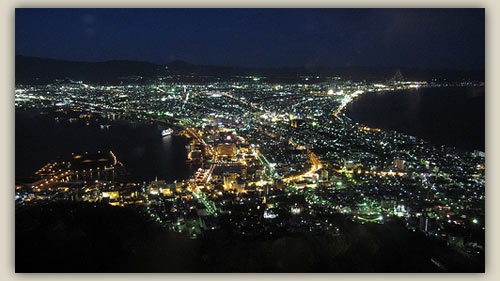My son and I are safely back home after our great adventure in northern Japan. On Saturday we did more sightseeing, of course visiting Mt. Hakodate to take in the famous night view and hitting the fish market the next morning. Then it was time to head for home, so we crossed back to Aomori using the Seikan Tunnel, taking a special train that stopped at the Tappi Undersea Station so we could take a tour of the only train station located 140 meters below sea level. Completed in 1988, the Seikan Tunnel is the longest and deepest in the world, spanning 53 km (33 miles) from end to end. The tunnel was built in response to a lack of capacity at the ferry docks that shuttled people and vehicles between the two islands, along with a series of terrible ferry accidents that claimed the lives of 1430 passengers in a single year. The tunnel was a very difficult dream to realize: it employed 1.4 million people and cost $7 billion, including 34 lives due to various accidents during construction.
Passing through the tunnel, we got to see the Shinkansen track they were laying which will eventually allow people to travel by speedy bullet train from Tokyo to Hokkaido. While I love riding these comfortable trains and appreciate that they’ve become an international symbol of Japan to the world, I wasn’t sure how to feel about the country’s eventual plan to bring its iconic high-speed trains all the way to Sapporo. Japan is a country positively addicted to construction, and while its engineering is probably the best in the world — something I could really appreciate, walking through concrete tunnels hewn out of the ocean floor — there’s a time when not building something might be a good idea, too. Like when you’ve got a falling population, as Japan does, and when you have popular alternatives to rail, like the perfectly good network of domestic airlines. Already 90% of travelers heading from Tokyo to northern Japan opt to travel by air, since a 4-6 hour train journey just isn’t convenient or most people, and I doubt this trend will change in the near future. I’d like to see Japan acknowledge that it’s no longer a scrappy economic powerhouse and start making good decisions about the country’s future based on a realistic world-view.

The night view from Hakodate is beautiful to behold.














